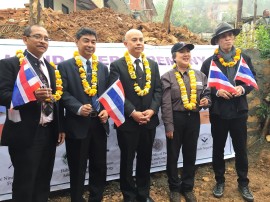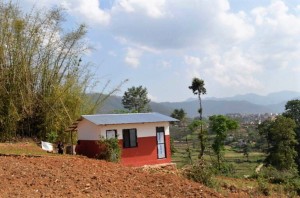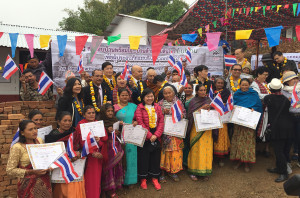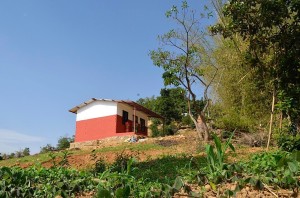
01 April 2017, Nepal
The catastrophic Nepal earthquake in 2015 damaged hundreds of houses and left many underprivileged people with no place to stay.
Immediately after the 7.8 magnitude quake, the Asian Institute of Technology (AIT) and Mekong Organization of Mankind (MOM) launched a public fundraising campaign to build community houses for the affected rural community using AIT’s Habitech Interlocking Brick Technology. This ‘for-mankind’ technology was developed at Habitech Center of AIT Solutions at AIT, which is earthquake resistant, environment friendly, energy-efficient, and cost effective.
Twenty-one disaster resilient houses were built using Habitech Building Technology for poor villagers in Phulbari village, Lubhu, Mahalaxmi Municipality in Nepal.
In March 2017, the 21 ”Baan Promchai” (House from the Heart of Thai people) were handed over to the house owners in the presence of H.E. Bhakavat Tanskul, Ambassador of Thailand to Nepal, Mr. Ek-att Thitaram, Minister Counsellor and Deputy Chief of Mission from Royal Thai Embassy in Nepal and other concerned parties. Mr. Noritada Morita, AIT Board Member and Mr. Gyanendra R. Sthapit, Director of Habitech Center also were present representing AIT in the ceremony.
This social welfare project was conceived by Ms. Sujintana Chanyatipsakul, President of The Nine Sustainability Foundation (originally MoM), who spent a lot of her efforts, personal resources and time to successfully push through the project. She was assisted by Mr. Gyanendra R. Sthapit, Director, Habitech Center, AIT Solutions of Asian Institute of Technology; Mr. Amrit Chusuwan, Dean of the Faculty of Painting, Sculpture and Graphic Arts of Silpakorn University and Mr. Iswar Joshi, Director of Innotech Nepal Pvt. Ltd. to realize this project on the ground. The house was designed by Arch. Sudiksha Amatya of AIT Solutions.
Mr. Sthapit expressed his gratitude to all the partners, donors, supporters and all concerned people, who assisted to realize this project. It is hoped that this first lot of Habitech houses will serve a good model for more rural communities to join hands themselves in organizing this similar self-help building project in the future.
To see more photos, please click here




